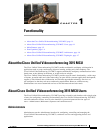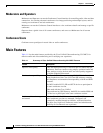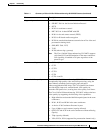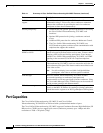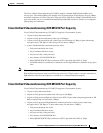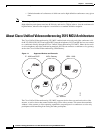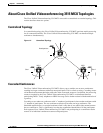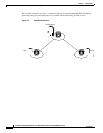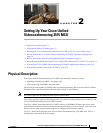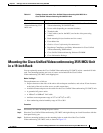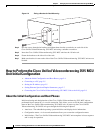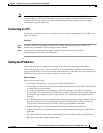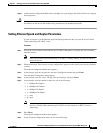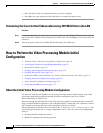
CHAPTER
2-1
Installation and Upgrade Guide for Cisco Unified Videoconferencing 3515 MCU Release 5.6
OL-17012-01
2
Setting Up Your Cisco Unified
Videoconferencing 3515 MCU
• Physical Description, page 2-1
• Verifying the Package Contents, page 2-2
• Mounting the Cisco Unified Videoconferencing 3515 MCU Unit in a 19-inch Rack, page 2-3
• How to Perform the Cisco Unified Videoconferencing 3515 MCU Unit Initial Configuration,
page 2-4
• How to Perform the Video Processing Module Initial Configuration, page 2-8
• About Managing and Monitoring the Cisco Unified Videoconferencing 3515 MCU Unit, page 2-13
• Accessing the Cisco Unified Videoconferencing 3515 MCU Administrator Interface, page 2-13
• Registering the Online Help for the 3515 MCU, page 2-15
Physical Description
Each Cisco Unified Videoconferencing 3515 MCU unit internally contains two cards:
• Signaling and audio card (MCU—the upper card)
• Video processing card (EMP—the lower card)
The two cards work together to perform audio and videoconferencing, but each card requires a unique
IP address. The cards communicate with each other using IP as the backbone.
Note For correct operation, the EMP card must register with the MCU.
This section provides a physical description of the Cisco Unified Videoconferencing 3515 MCU12 and
Cisco
Unified Videoconferencing 3515 MCU24 units.
The Cisco Unified Videoconferencing 3515 MCU unit has a 10/100BaseT Ethernet port on the front
panel that uses an RJ-45 connector to connect to the network. There is an asynchronous, 9-pin serial-port
that you can use with a hyperterminal program to configure and monitor the module.
Figure 2-1 shows the front panel of the Cisco Unified Videoconferencing 3515 MCU unit. Table 2-1
describes the components of the front panel.



